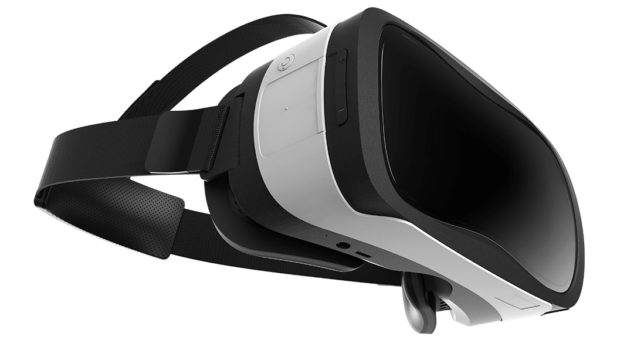
I just received a review copy of the Pico 1 headset in the mail.
Disclosure: It was provided free by GeekBuying. But even though it was free, it still wasn’t worth the money.
Was I disappointed? Absolutely! From the pictures and early descriptions I had this fantasy that the Pico 1 would be the Cardboard alternative to the Gear VR, with its touchpad and built-in volume dial and control buttons.
But despite pairing it up over Bluetooth with my phone, I couldn’t get any of the controls actually working, and in many other respects the headset disappointed as well.
In fact, the best thing about the headset was its packaging. I loved the packaging.
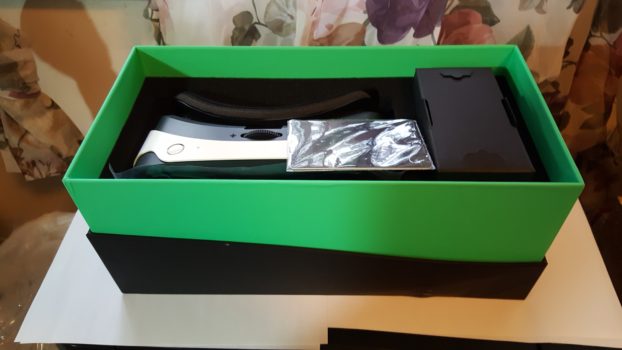
1. Field of view
The field of view is listed as 96 degrees, and that’s about what it felt like. That’s the same field of view as the Gear VR — but significantly lower than the best Cardboard-compatible headset on the market today, the BoboVR Z4.
2. Weight
No complaints about the weight. It comes in at 300 grams, or 10.5 ounces, which is very decent — and lighter than the Gear VR.
3. Straps
The latch on the top strap, the one that goes over the top of your head, was really annoying. It’s the same one as the Gear VR users, and it’s annoying there, as well. It’s an unnecessary bit of tomfoolery that just makes life more complicated.
Otherwise, I found the straps just fine, and the headset was pretty comfortable to wear.
4. Fits over glasses
It fit over my glasses, but just barely, and my glasses pressed into the soft foam on the sides. If you wear larger glasses, this could be an issue.
5. Adjustable lenses
As with the Gear VR, you can adjust the focal distance but not the interpupillary distance, the distance between the lenses.
So if your eyes are particularly far apart or close together, you might have problems.
6. Ready for augmented reality
Yes, the outside cover is transparent.
7. Fits over power and audio cables
Not as far as I can tell. The holder for the smartphone is completely enclosed on all sides.
8. Controller
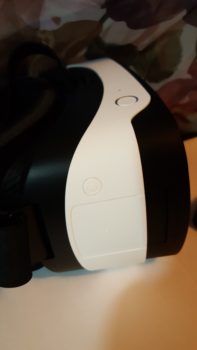
It’s supposed to have a Bluetooth touchpad, volume dial, and two control buttons. And although I was able to pair it with my phone, I could not get any of the controls to work.
The QR code provided in the little Chinese-language user manual takes me to Tencent’s WeChat app. Maybe Chinese users get a different app?
However, by going directly to the PicoVR website on my phone, I was able to side-load the PicoVR app. I do not recommend that people do this — apps should only be downloaded from the official app store, not from random sites on the web. But I’ve reported from Afghanistan, so my tolerance for risk is pretty high.
So I went and hit that “download now” button, and told my phone to go ahead and install it, despite the risk, then gave the app permission to draw over other apps, modify system settings, read phone status and identity, and read the contents of my SD card. Â Yeah. Plus a few other permissions. Insane, right?
The app is partially in English, so you can kind of navigate it. There’s a bunch of Chinese videos and a handful of games. The touchpad does work inside the app, and I randomly found an option to switch to its virtual reality environment, where you can choose movies or games. However, I couldn’t figure out how to download anything.
9. Price
It’s $86 on GeekBuying and $74 on AliExpress. That’s far, far too much since it doesn’t work and you can get the BoboVR Z4 for less than half the price.
10. Ease of use
Here the headset is a total and complete fail. Getting your phone into it is a nightmare, as is figuring out how to use the controls. In a time and age when most high-end Cardboard headsets have gone to a simple shelf approach, this headset is actually worse than the Gear VR.
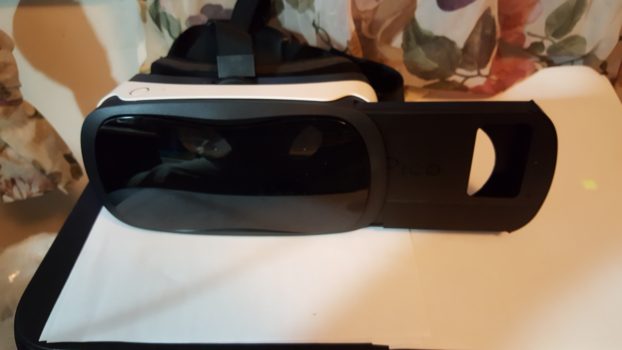
I had to watch a video to figure out how to use it. That’s a really bad sign, since I’ve probably tried more than two dozen headsets so far.
You pull out this cassette from the side of the headset, snap it open while trying not to break it, put the phone in, slide the cassette into the headset, and check to see if the image is aligned. It took me three tries to get the phone centered both vertically and horizontally in the thing.
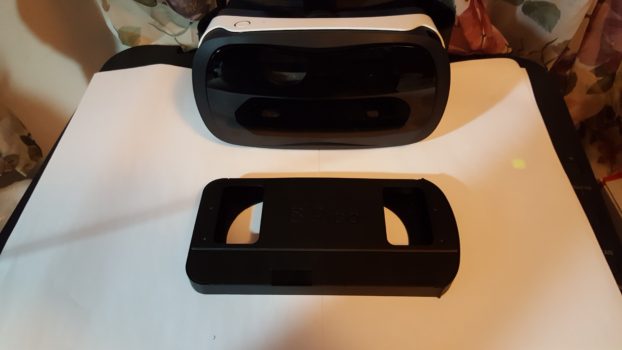
Then, as I mentioned above, I couldn’t get the controls to work. The guys who did the unboxing video, The VR Shop, were able to get the volume control to work, but not the rest of it. I couldn’t even get the volume to work, despite checking all the settings in my Bluetooth configuration options.
Bottom line
Wait for the Daydream headsets to come out later this year. And if you really want a Cardboard-compatible headset before then, get the BoboVR Z4.
Oh, and it doesn’t come with a QR Code. Fortunately, the BoboVR QR Code I had installed from my previous review seemed to work after I fiddled with the smartphone’s positioning and the focus.
Where to buy
If you still want the headset, you can get it from GeekBuying for $80, or from AliExpress for $74.
- OSgrid back online after extended maintenance - April 16, 2025
- Analysts predict drop in headset sales this year - March 25, 2025
- OSgrid enters immediate long-term maintenance - March 5, 2025
